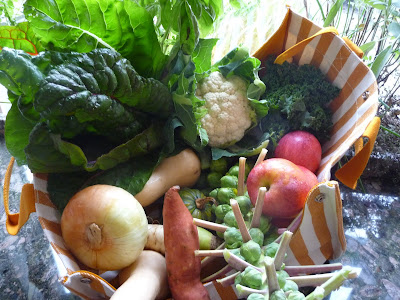
Le Bernardin in New York is a three-star restaurant where the specialty is fish. Maguy Le Coze and Eric Ripert are solidly at the helm and, under their direction, their team faultlessly deliver their passengers to Cythère. I first went to it when it was in the Paris street, which gave the restaurant its name. Itself derived from the convent, which stood there before the Revolution. The ruins have since been beautifully restored. Maggie’s brother was the chef before his untimely death. Then as now, the cuisine was memorable and the service impeccable. The New York successor is much bigger but the quality is unchanged. The menu offers four courses including a dessert. There are also two more extensive tasting menus. The categories you choose from are “almost raw”, “barely touched” and “lightly cooked”. There can be no clearer indication of the philosophy at work: the ingredient is foremost and the cuisine is at its service. Le Bernardin does not serve Chilean sea bass or any other endangered specie.
On a recent visit, I asked for one and received two recipes of my choice. The first one is the almost raw tuna, which uses foie gras au torchon (see December 11th ) on a baguette with raw tuna layered on top. The second is the barely touched scallop, another subtly enhanced savor. In both cases the magic comes from the just combination of a few notes. The recipes serve 4. I cannot think of a better start for the year 2010.
Le Bernardin Tuna (Layers of thinly pounded yellowfish tuna, foie gras and toasted baguette, shaved chives and extra virgin olive oil)
(Easy, Assemblage time: 5 minutes, Expensive)
Ingredients
¼ recipe torchon foie gras
8 oz (250g) yellowfish tuna
½ baguette
Fine sea salt and freshly ground white pepper to taste
Extra virgin olive oil
Shallots minced
Chives snipped
Lemon halves
Material:
Meat slicer on #3 setting
Rolling pin
Plastic film
Brush
Cut the tuna in 8 pieces of 1 oz each respecting the grain of the fish. Place each piece between two larger layers of plastic film. Pound with the rolling pin until the tuna is as thin as smoked salmon. Reserve in the fridge until ready to assemble.
Slice thinly the foie gras.
Halve the baguette half for another usage and slice each quarter lengthwise. You should get 8 thin pieces of bread.
To assemble, place the foie gras slices on the bread. Place the bread in the center of the plate. Remove the top plastic layer from the tuna and place the tuna over the foie gras. Season with salt and pepper. Brush the tuna with olive oil. Sprinkle a few shallots and chives over it. Squeeze lemon juice at the last minute.
Le Bernardin scallop (ultra rare scorched scallop, garlic chive goat milk butter emulsion)
(Easy, Preparation time:20 minutes, Reasonable)
Ingredients:
1-Emulsion
¼ lb (113g) garlic chives bud
Kosher salt
6 oz (177g) goat’s milk butter cubed
Fine sea salt and freshly ground white pepper
2- Relish and garnish
¼ lb (113g) garlic chives buds
4 teaspoons olive oil
zest of 1 lemon
fine sea salt and freshly ground white pepper
16 pieces (113g) hen of the woods mushrooms
1 tablespoon canola oil
Freshly ground black pepper
1 lemon cut in half
3-Scallops
¾ lb (340g) sea scallops (8 large)
2 teaspoons olive oil
Fine sea salt and freshly ground black pepper.
Material:
Medium stockpot
Strainer
Salad bowl with ice cubes
Blender
Small saucepan
Eggbeater
Iron pan or griddle
Gently pull off the muscles off the scallops and discard. Season the scallops with olive oil, salt and pepper. (This operation can be done as soon as you purchase the scallops.)
1- Bring salted water to a boil in the stockpot. Cut the garlic chive buds into 1-inch pieces and blanch for about two minutes. Strain and place the strainer in the salad bowl filled with ice cubes. Blend the chives with a couple of ice cubes and purée. Strain through a fine sieve into a bowl and reserve.
Bring two tablespoons of water to a simmer in a small saucepan and whisk in the goat’s milk butter, 1 tablespoon at a time until fully incorporated with an eggbeater. Beat in about 4 tablespoons of the garlic chive bud purée and season to taste with salt and pepper
2- Trim the tough stems off the remaining garlic chive buds. Place them in a salad bowl and season them with olive oil, salt and pepper. Set the iron pan or griddle on the gas at the high setting. When it is very hot, add the chives and cook until they are tender and lightly charred. Transfer to the cutting board and set aside 8 garlic chive buds. Chop the rest. Transfer back to the salad bowl. Add 2 tablespoons of olive oil, lemon zest, salt and pepper. Reserve.
Heat a sauté pan in which a little bit of canola oil has been added over medium high. Sauté the hen of the woods mushrooms until golden brown and tender. Season to taste with salt and pepper.
3- Heat the cast iron griddle until very hot. Remove the scallops from the marinade and sear quickly on both sides about 1 minute. The scallops must remain rare.
To assemble, spoon a line of relish down the center of the plate, slice the scallops in half and place the rare side face up. Garnish each scallop with a charred chive bud, add 4 pieces of mushrooms over and around the sliced scallops. Squeeze a drop of lemon juice over the scallops and spoon the emulsion over and around. Serve immediately

















